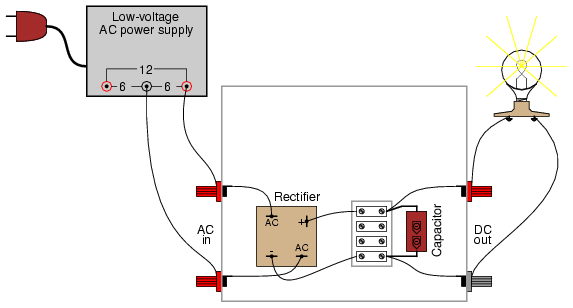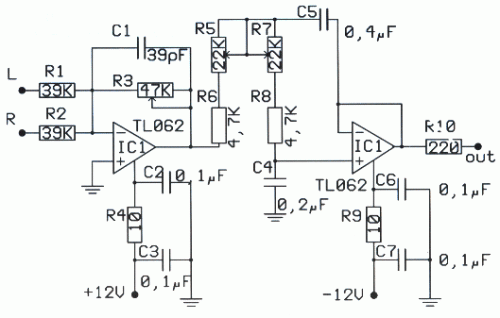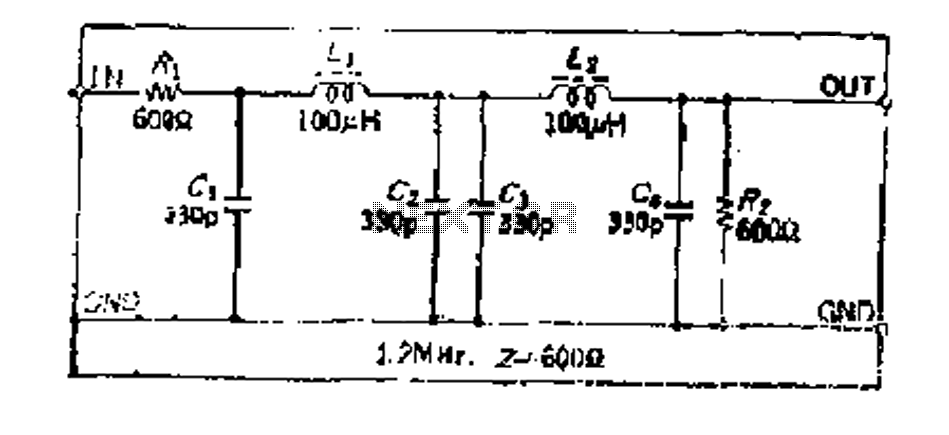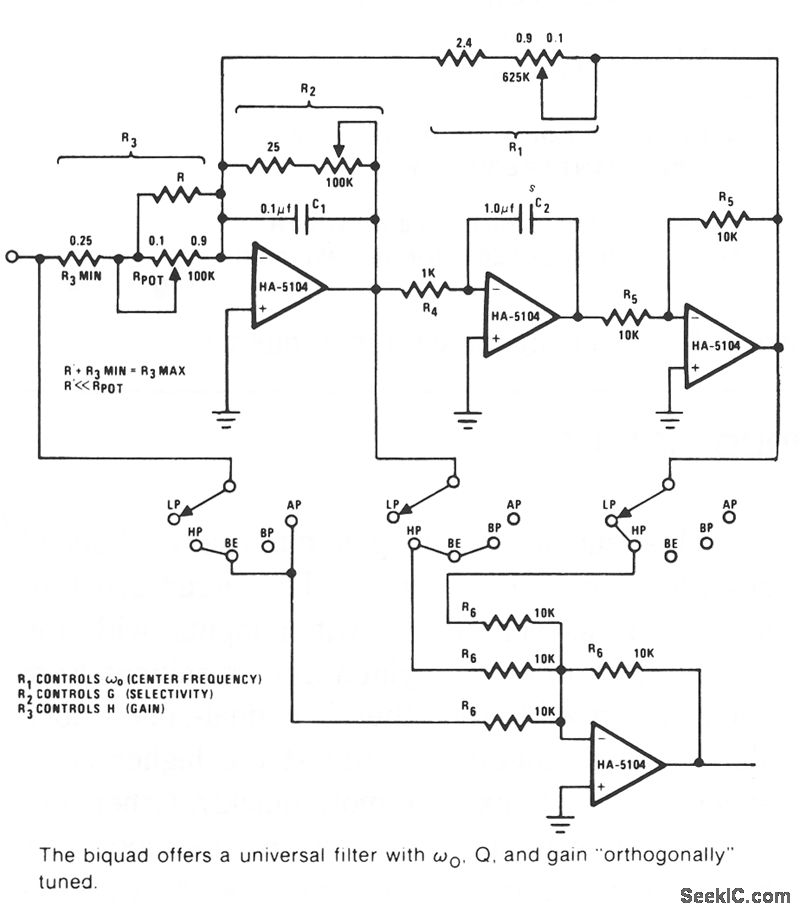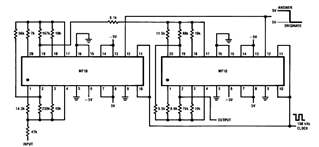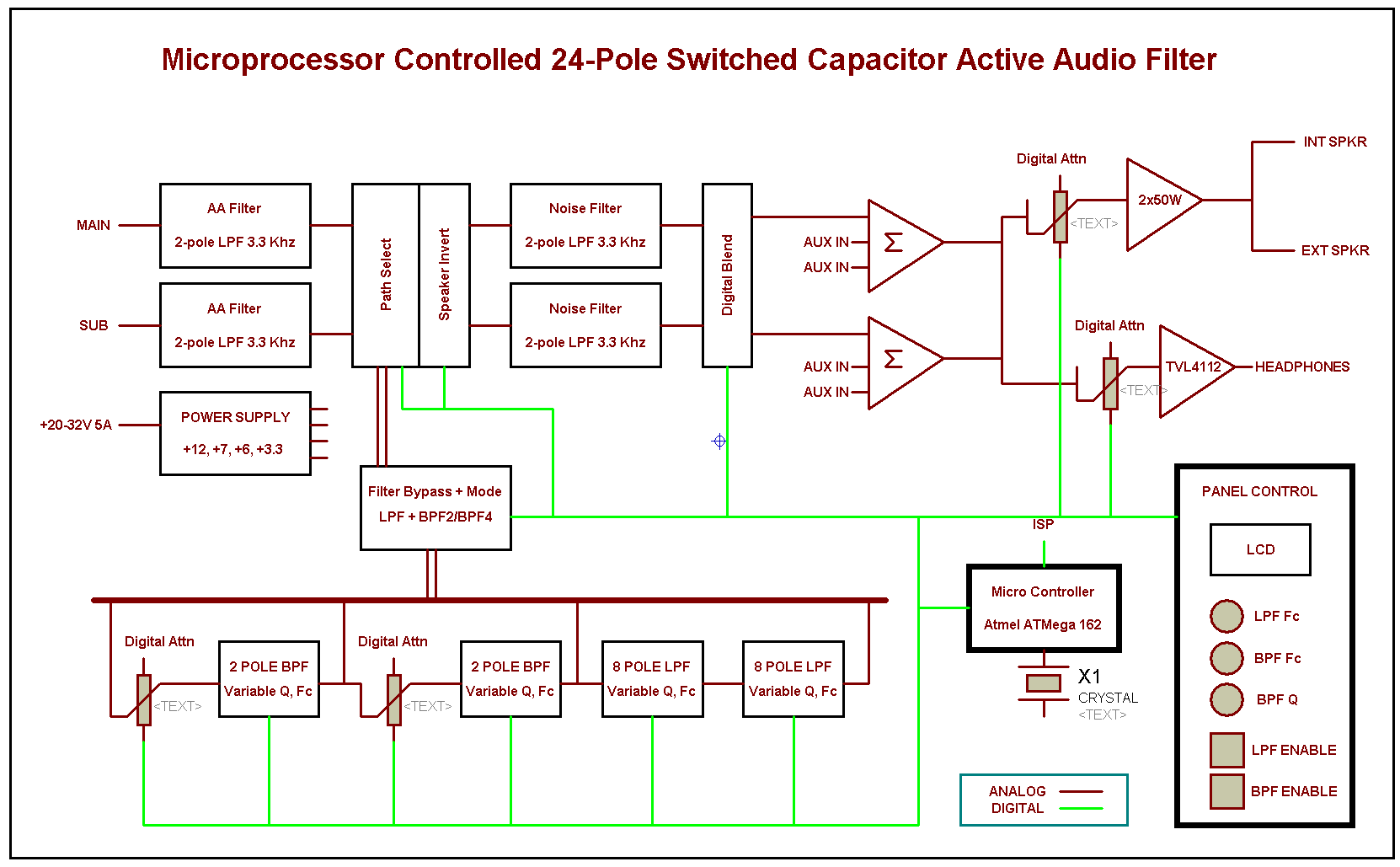
Hum filter
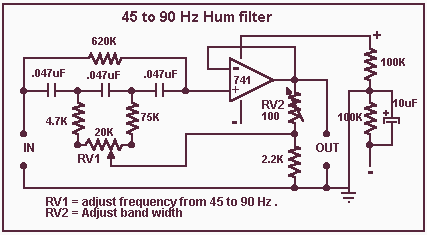
On this page three adjustable notch filters configurations are shown. They can be used in your small pre-amp or amplifier project to filter out any HUM at 50 Hz (European) or 60Hz. By substituting the capacitors values in the bridge, other frequencies can be used. All op-amps configuration requires a +/- voltage supply which can easily be provided with a voltage divider made of two 100K resistors and a 10 uF filtering capacitor connected from ground to the negative rail. Any op-amps such as the LF353, TL071, LM308 can be used and supply from a 9 volt battery or other voltage up to 30 volts can be used.
The circuit described consists of three adjustable notch filter configurations, designed to effectively eliminate unwanted hum at 50 Hz or 60 Hz, which are common frequencies associated with electrical noise in audio applications. Each configuration utilizes operational amplifiers (op-amps) such as LF353, TL071, or LM308, which are known for their low noise and high performance, making them suitable for audio signal processing.
To implement the notch filter, a bridge configuration is employed, where the frequency of the notch can be adjusted by changing the capacitor values. This flexibility allows the user to tailor the filter to target specific frequencies of interference, thus enhancing the overall audio quality of the pre-amplifier or amplifier project.
The op-amps require a dual power supply, which can be conveniently generated using a voltage divider composed of two 100K resistors. This arrangement provides the necessary positive and negative voltage rails for the op-amps. Additionally, a 10 µF filtering capacitor is connected from ground to the negative rail to stabilize the power supply and reduce noise.
The circuit can be powered by a 9-volt battery or other power sources with voltages up to 30 volts. This range allows for versatility in applications, accommodating different power supply options based on project requirements. The adjustable notch filters are particularly useful in small audio projects where eliminating hum is crucial for achieving clear sound reproduction.On this page three adjustable notch filters configurations are shown . They can be used in your small pre-amp or amplifier project to filter out any HUM at 50 Hz ( European ) or 60Hz . By sustituting the capacitors values in the bridge other frequencies can be used . All op-amps configuration requires a +/- voltage supply which can easily provided with a voltage divider made of two 100K resistors and a 10 uF filtering capacitor connected from ground to the negative rail .
Any op-amps such as the LF353 , TL071, LM308 can be used and supply from a 9 volt battery or other voltage up to 30 volts can be used . 🔗 External reference
The circuit described consists of three adjustable notch filter configurations, designed to effectively eliminate unwanted hum at 50 Hz or 60 Hz, which are common frequencies associated with electrical noise in audio applications. Each configuration utilizes operational amplifiers (op-amps) such as LF353, TL071, or LM308, which are known for their low noise and high performance, making them suitable for audio signal processing.
To implement the notch filter, a bridge configuration is employed, where the frequency of the notch can be adjusted by changing the capacitor values. This flexibility allows the user to tailor the filter to target specific frequencies of interference, thus enhancing the overall audio quality of the pre-amplifier or amplifier project.
The op-amps require a dual power supply, which can be conveniently generated using a voltage divider composed of two 100K resistors. This arrangement provides the necessary positive and negative voltage rails for the op-amps. Additionally, a 10 µF filtering capacitor is connected from ground to the negative rail to stabilize the power supply and reduce noise.
The circuit can be powered by a 9-volt battery or other power sources with voltages up to 30 volts. This range allows for versatility in applications, accommodating different power supply options based on project requirements. The adjustable notch filters are particularly useful in small audio projects where eliminating hum is crucial for achieving clear sound reproduction.On this page three adjustable notch filters configurations are shown . They can be used in your small pre-amp or amplifier project to filter out any HUM at 50 Hz ( European ) or 60Hz . By sustituting the capacitors values in the bridge other frequencies can be used . All op-amps configuration requires a +/- voltage supply which can easily provided with a voltage divider made of two 100K resistors and a 10 uF filtering capacitor connected from ground to the negative rail .
Any op-amps such as the LF353 , TL071, LM308 can be used and supply from a 9 volt battery or other voltage up to 30 volts can be used . 🔗 External reference
